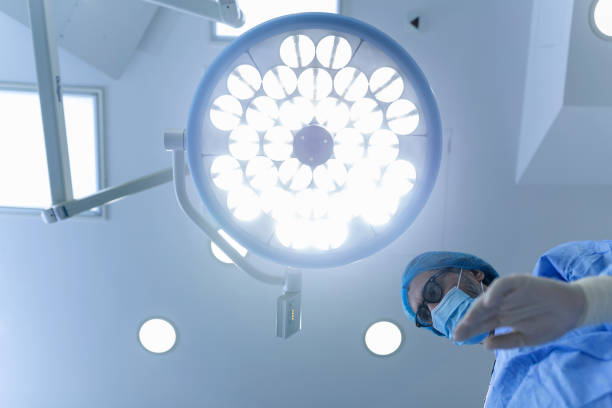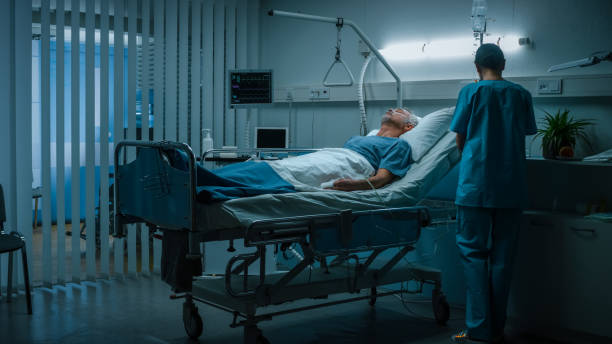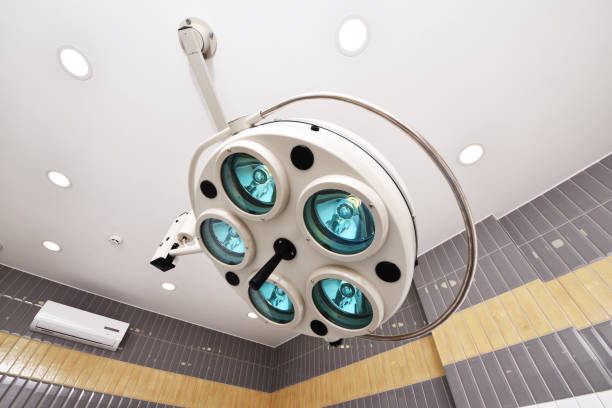

Operating room lighting should be designed to provide maximum visual clarity, color accuracy, and a shadow-free environment during surgical procedures. This is because operating room lighting helps the surgeon see even the smallest vessels, tissues, or abnormalities correctly, thereby contributing to the successful completion of the operation. In this context, shadow-free, high-intensity light minimizes distractions for the surgeon, providing an error-free working environment. At the same time, color accuracy allows tissue tones to be perceived realistically, enabling correct decisions to be made at critical moments, such as during bleeding control. Finally, since maintaining consistent lighting throughout the surgery and being able to adjust it without obstructing the surgeon’s view facilitates team coordination and makes the intervention process safer, operating room lighting must be selected with great care.


There are many areas where operating room lighting is important. These areas primarily include delivery rooms, intensive care units, and forensic medicine laboratories. Many important procedures are performed in these areas, making them the most critical locations for these systems. If we examine these areas in detail:
Lighting systems used in delivery rooms should be designed to support both the delivery process and situations requiring emergency intervention. This ensures that delivery is performed comfortably, protecting the health of both mother and baby. For this reason, it is ideal for delivery room lighting to have a light intensity in the range of 40,000–60,000 lumens. In addition, the color rendering index (CRI) must be at least 90. This is because skin tone changes, bleeding, and tissue structures can be perceived correctly. Furthermore, a color temperature between 4,000K and 4,500K provides an optimal level of naturalness and medical accuracy. Finally, delivery room lighting must not strain the eyes and must be easy to sterilize.


Lighting in intensive care units should facilitate continuous monitoring of patients while also enabling staff to comfortably perform procedures that require prolonged attention. For this reason, intensive care unit lighting should typically have a brightness level between 30,000 and 50,000 lumens and be low-flicker. CRI values should be between 5 and 90, as tissue analysis and color detection are important in these areas. In addition, lighting should have a color temperature between 3,500K and 4,000K, and adjustable brightness and a tone close to daylight should be preferred, taking patient psychology into account. This ensures the selection of appropriate intensive care unit lighting.
Examinations conducted in forensic laboratories require microscopic precision and color accuracy. Therefore, lighting systems must have a minimum power of 50,000 lumens and be positioned to provide shadow-free light. The CRI value should be at least 95. Otherwise, color differences on stains or evidence cannot be clearly detected. In addition, the color temperature should be between 5,000K and 5,500K. This value is closest to daylight and increases the accuracy of visual analysis. Finally, forensic laboratory lighting must not contain UV, must not heat up, and must not cause eye strain. This allows experts to work comfortably for extended periods of analysis without losing focus.


Operating room lighting models are categorized based on the size of the area, lighting requirements, and functionality. Therefore, operating room fixtures provide users with significant convenience in terms of aesthetics and functionality. The most commonly preferred operating room lighting types are as follows:
As with other lighting options, operating room lighting also has its own unique characteristics. These features have been specifically developed to ensure that surgical procedures are performed safely and effectively. In this context, operating room lighting features include:


Choosing the right fixture for your project from among operating room lighting models is crucial from both an aesthetic and functional perspective. Therefore, every feature of operating room fixtures should be examined in detail. In this context, the following points should be considered when selecting operating room lighting:
Operating room lighting prices vary depending on the model, brand, function, and bulk purchase. Operating room lighting manufacturer Licalux Lighting offers users high-quality solutions at affordable prices. You can browse operating room lighting fixtures on our website and contact us for operating room lighting prices.

Meet Licalux Lighting Company and discover the most innovative ways to illuminate your spaces! Our professional team is ready to provide you with customized solutions across design, engineering, project management, and automation stages, providing you with a unique and high-quality lighting experience!